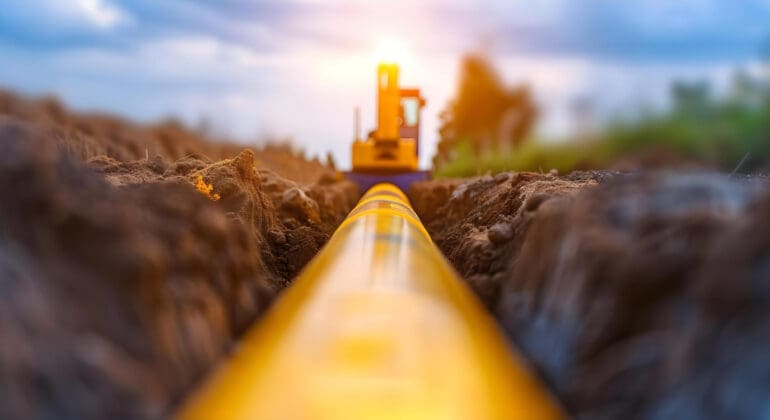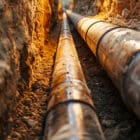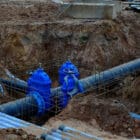In recent years, trenchless technology has emerged as a significant game changer in pipeline construction and repair. Traditional excavation methods, characterized by disruptive digging and extensive site damage, are increasingly being supplanted by innovative trenchless techniques. Exploring the advantages of using trenchless methods over traditional excavation, this post delves into how these advancements are not only more efficient but also environmentally friendlier and cost-effective.
Trenchless technologies offer a non-invasive alternative, ensuring that the surface remains largely undisturbed while underground pipelines are installed or repaired. This breakthrough approach transforms the landscape of pipeline projects, offering unprecedented benefits for municipalities, contractors, and the general public alike.
Trenchless technology isn’t just a method; it’s a revolution. It transforms pipeline projects into efficient, eco-friendly operations, allowing us to build and restore infrastructure with minimal disruption and maximum impact – Victor Mackissack
Environmental and Social Advantages
One of the foremost advantages of trenchless technology is its minimal environmental impact. Traditional excavation necessitates the removal of large amounts of earth, often resulting in damaged ecosystems and disrupted habitats. In contrast, trenchless techniques require only small entry and exit points, significantly reducing the ecological footprint.
Moreover, trenchless methods mitigate the social inconvenience commonly associated with conventional pipeline projects. Imagine navigating through busy urban environments marred by construction zones and reduced road capacity. Trenchless technology offers a solution, maintaining the integrity of streets and sidewalks, thereby minimizing traffic disruptions and enhancing community convenience.
Cost Efficiency and Economic Benefits
Another compelling advantage of trenchless technology is its cost-efficiency. While initial equipment and technology investments may appear higher, the overall project costs tend to be lower compared to traditional methods. This cost-effectiveness is primarily driven by reduced labor requirements, shorter project timelines, and minimized surface restoration expenses.
Furthermore, the economic benefits extend beyond the immediate project savings. By reducing disruption to local businesses and minimizing traffic delays, trenchless projects often contribute to sustaining the economic vitality of the affected area. Businesses can continue operations with minimal interference, which is particularly valuable in densely populated or commercially active regions.
Enhanced Project Safety
Safety is paramount in any construction project, and trenchless technology excels in this area. Traditional excavation often involves significant hazards, including the risk of cave-ins, accidental utility strikes, and heavy machinery accidents. Trenchless methods inherently reduce these risks by limiting the extent of excavation required.
For operators and crews, the reduced need for extensive digging translates into a safer working environment. Moreover, by limiting the disturbance of the underground strata, trenchless technology minimizes the risk of inadvertently damaging existing utilities, thereby enhancing overall project safety.
Improved Efficiency and Speed
Efficiency and speed are critical factors that determine the success of pipeline projects. Traditional methods are often time-consuming, involving prolonged digging, material removal, and subsequent restoration. Trenchless technology, on the other hand, streamlines these processes, significantly reducing the overall project duration.
Methods like horizontal directional drilling (HDD), pipe bursting, and cured-in-place pipe (CIPP) lining are designed to minimize downtime, allowing for quicker project completion. This expedited timeline not only reduces labor costs but also facilitates faster utility service restoration, benefitting both providers and consumers.
Technological Versatility
Trenchless technology is not a one-size-fits-all solution but rather a suite of versatile methods tailored to different project requirements. HDD, for instance, is ideal for installing new pipelines beneath obstacles such as rivers and roads, while pipe bursting is effective for replacing existing lines without excavation.
CIPP lining, another popular trenchless method, allows for the rehabilitation of aging pipelines without removing them. This not only extends the lifespan of the existing infrastructure but also offers a cost-effective and environmentally friendly alternative to complete pipeline replacement. The versatility of these methods ensures that trenchless technology can address a wide range of pipeline project needs, making it an invaluable tool for engineers and contractors.
The new Close Fit Composite Liner (CFCL) is annother innovative trenchless method that excels in the rehabilitation of deteriorating pipelines. Unlike traditional pipeline replacement, CFCL involves the insertion of a composite liner into the existing pipeline. This liner is then expanded to closely fit the host pipe, effectively creating a new, durable pipe within the old one.
The process is minimally invasive, requiring only small access points, which significantly reduces the environmental impact and disruption typically associated with pipeline repair. CFCL is highly adaptable, making it suitable for various pipeline materials and diameters used in water, gas, oil, and sewer systems. Its corrosion-resistant properties and robust structural integrity offer a long-term solution, contributing to the sustainable management of aging infrastructures.
Fold and Form PVC lining also represents a revolutionary approach to the rehabilitation of old pipelines. This method involves the insertion of a pre-folded PVC liner into the existing pipe. Once in place, the liner is re-rounded and expanded using heat and pressure to conform to the interior walls of the host pipe. The result is a smooth, seamless, and structurally sound new pipe within the old one.
Fold and Form PVC is particularly advantageous for pipelines with complex bends and irregular shapes, as the material’s flexibility allows it to navigate and adapt to these challenges easily. This technique also minimizes excavation requirements, offering a rapid and efficient solution with reduced costs and minimal environmental disturbance. The Fold and Form PVC method not only extends the operational life of existing pipelines but also enhances flow capacity and structural integrity, proving to be a game-changer in the trenchless technology landscape.
The Future of Pipeline Projects
In conclusion, trenchless technology represents a significant advancement in pipeline construction and repair, offering numerous benefits over traditional excavation methods. From minimized environmental impact and social inconvenience to enhanced safety and cost-efficiency, the advantages are clear and compelling.
As we continue to explore and embrace the advantages of using trenchless methods over traditional excavation, it becomes evident that this technology holds the key to more sustainable, efficient, and economically viable pipeline projects. The broad applicability and myriad benefits of trenchless technology underscore its potential to revolutionize the industry, paving the way for a future where pipeline projects are completed with minimal disruption and maximum efficiency.





